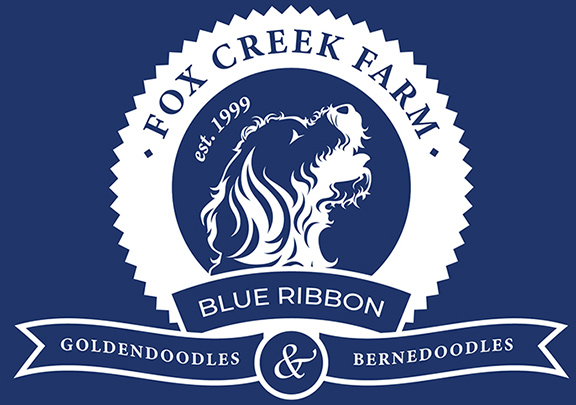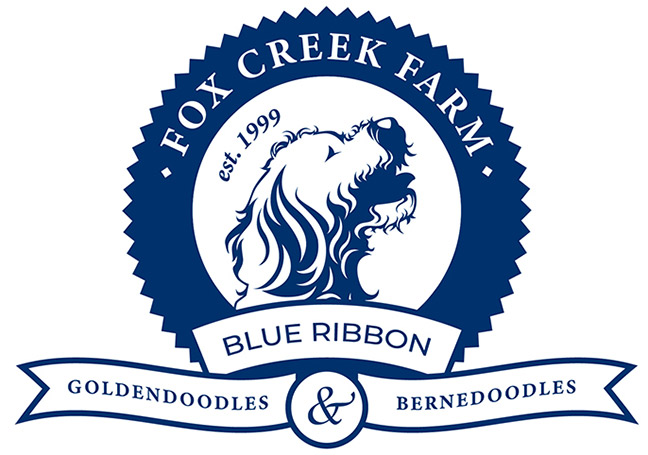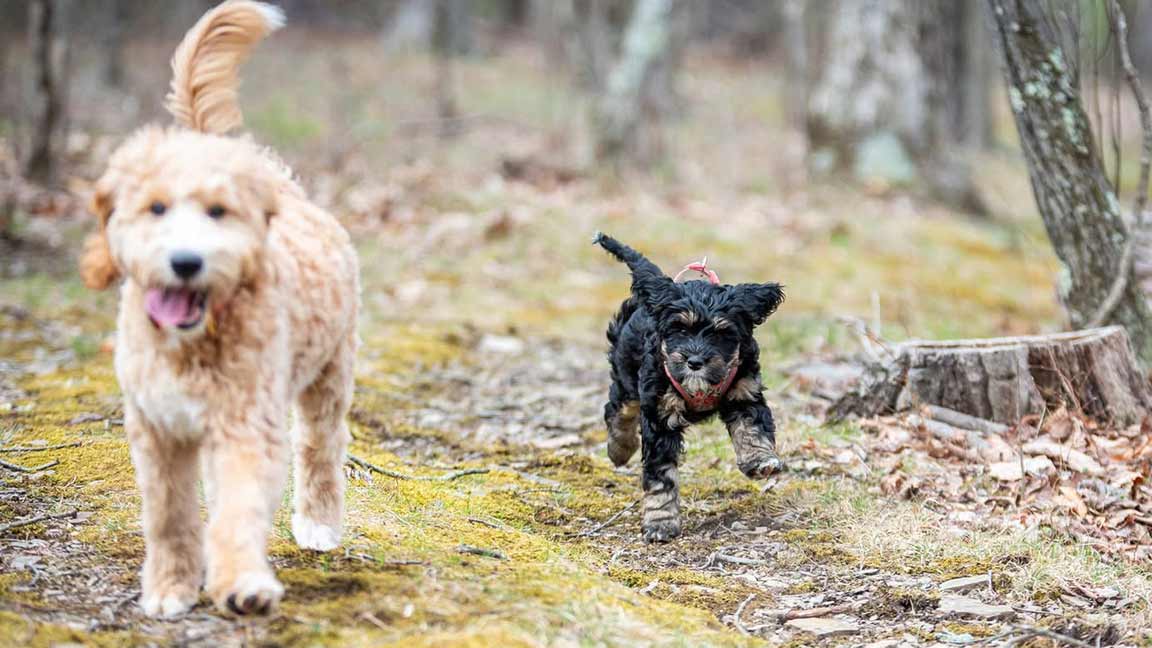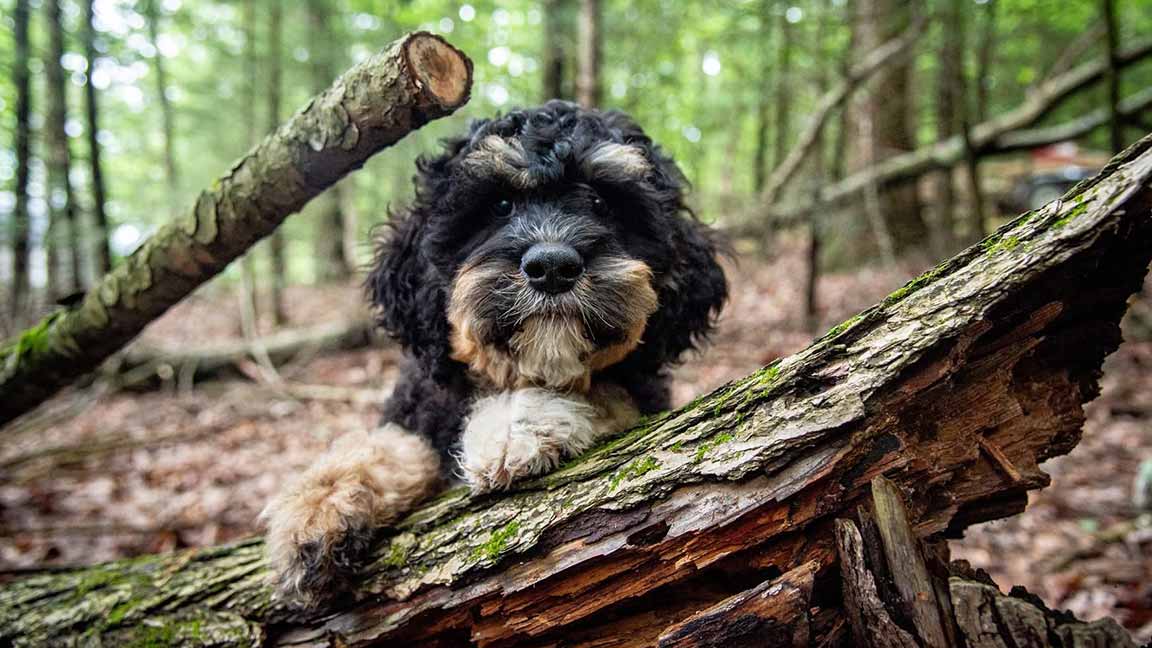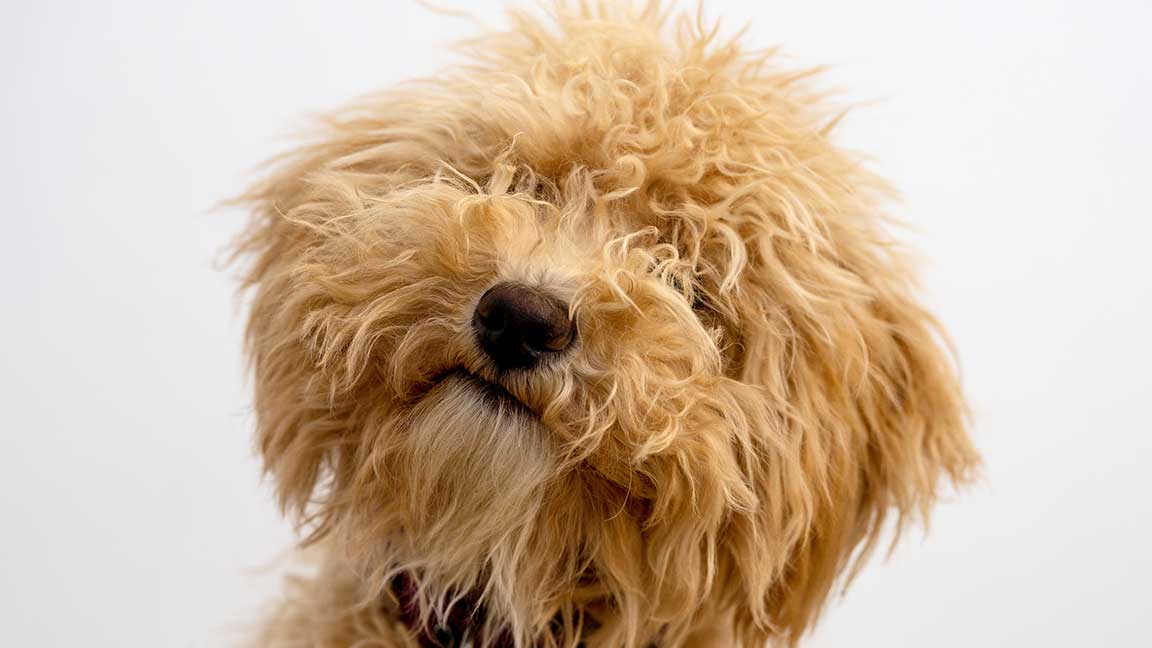
What’s the Difference Between Goldendoodle Coats?
The delightful and ever-popular Goldendoodle has captured the hearts of many with its charming blend of intelligence, affability, and the often-cited “teddy bear” appearance. At the heart of this allure is the variety of Goldendoodle coat types that not only contribute to their aesthetic appeal but also play a significant role in how these dogs fit into the diverse lifestyles and needs of their human companions. In the intersecting worlds of the sprightly Golden Retriever and the distinguished Poodle, the Goldendoodle emerges as a perfect fusion, bringing with it a tapestry of coat textures – each with its unique set of characteristics.
For prospective owners, understanding these coat types goes beyond mere preference. It’s about predicting shedding tendencies, grooming commitments, and, crucially for many, managing allergies. Whether you’re drawn to the lush, hypoallergenic curls or the silky, easy-to-brush straight coat, or you find yourself enamored with the gentle waves that fall somewhere in between, there’s more to a Goldendoodle’s fur than meets the eye.
In this blog, we will delve into the plush world of Goldendoodle coat types, unraveling the curly, the flat, the straight, and the wavy. We’ll explore the implications of each variety, from their potential to shed to the level of care they require. And, as we uncover the genetic tapestry that weaves these dogs’ coats into existence, we will also discuss why certain multigen varieties are often the choice for those particularly sensitive to pet dander. If you’re considering a Goldendoodle as your next furry family member or intrigued by these captivating creatures, understanding their coats is an essential thread in the fabric of their being. So, let’s embark on this journey together, exploring the fascinating world of Goldendoodle coat types.
Understanding Goldendoodle Coat Types
The allure of the Goldendoodle is, in part, due to the eclectic mix of coat types that can adorn each individual dog. These coat types are not just randomly assigned but are a product of intricate genetic combinations from their parent breeds. To truly appreciate the nuances of each Goldendoodle’s hair, one must first understand the genetic tapestry from which these coats emerge.
The Basics of Goldendoodle Coats
Goldendoodle coats can be categorized into four main types: curly, flat, straight, and wavy. Here’s a quick overview of each:
- Curly Coat: Resembling the Poodle, these coats are tightly coiled and offer a wool-like texture. They are often improperly praised for being low to non-shedding since coat type does not predict shedding.
- Flat Coat: This type mirrors the coat of the Golden Retriever parent, being more prone to moderate to high shedding and exhibiting a smoother, straighter appearance. The face on this variety will have smooth, short hair like a Golden Retriever.
- Wavy Coat: A hybrid of the two, wavy coats are sometimes referred to as “fleece” coats, providing a middle ground between the curly and straight varieties.
- Straight Coat: These Goldendoodles ended up inheriting no curl genes and will have a lush but straight full coat.
Each of these coat types carries its own set of advantages and considerations, particularly when it comes to grooming and the potential for allergic reactions in humans.
The Parent Dogs
The coat of a Goldendoodle is inherited from its parent breeds—the Golden Retriever and the Poodle. Both breeds bring distinct qualities to the mix:
- Golden Retriever: Known for their dense, water-repellent outer coat and a heavy undercoat, Golden Retrievers typically shed seasonally and require regular grooming to maintain their lustrous fur.
- Poodle: Poodles boast a curly, dense coat that is often hailed for its low shedding properties, making them a favored choice for people with allergies.
When these two breeds are combined, the resulting Goldendoodle can inherit any combination of these coat characteristics with size differences influenced by the specific Poodle type used in breeding (toy, miniature, or standard).
In the next sections, we will explore each Goldendoodle coat type in detail, discussing the physical characteristics, maintenance requirements, and what potential owners can expect in terms of shedding and care. Stay tuned to learn more about these beautiful and diverse coats and how they might fit into your life.
Detailed Look at Each Goldendoodle Coat Type
Diving into the distinctive textures and care requirements of Goldendoodle coats, we find that each type holds its charm and challenges. From the curly variety that evokes the classic Poodle aesthetic to the flat coat that harks back to their Golden Retriever ancestry, the Goldendoodle’s hair is a talking point that goes beyond mere looks. Let’s take a closer look at each type and what it means for you and your
furry friend.
Curly Coat
The curly coat Goldendoodle is often the first image that comes to mind when one thinks of a Doodle that closely resembles the Poodle side of the family. Here are the key features:
- Appearance: These coats are characterized by tight, dense curls that feel wooly to the touch.
- Maintenance: Curly coats can be prone to matting and thus require regular grooming. It’s recommended to brush them several times a week and schedule professional grooming every 6-8 weeks.
- Allergies and Shedding: The common misconception is that a curly coat equates with non-shedding and hypoallergenic qualities. The coat type actually has no bearing on these qualities as previously thought before the discovery of the furnishing genes.
- Friction Areas: Paying special attention to areas of high friction, such as under the collar or where limbs rub together, is important to prevent mats and discomfort.
Flat Coat
Flat-coated Goldendoodles tend to look more like their Golden Retriever parent, and they come with their own set of characteristics:
- Appearance: This coat type features shorter hair that lies flat and smooth against the body requiring no trimming. They lack furnishing genes like their Golden Retriever ancestors and they do not possess the “Doodle” look.
- Maintenance: Straight coats are typically the easiest to maintain among Goldendoodle varieties. Regular brushing a few times a week is often sufficient to keep the coat healthy and free of tangles.
- Allergies and Shedding: Straight coats do shed more than their teddy bear-looking counterparts, making them less ideal for allergy sufferers. Regular grooming can help manage the loose hair and minimize the impact.
Wavy Coat
The wavy coat, or “fleece” coat, is a balance between the curly and straight types and comes with its unique considerations:
- Appearance: Wavy coats have a soft, undulating texture that’s plush to the touch.
- Maintenance: These coats may need brushing a few times a week to prevent mats and tangles, especially in the undercoat. They are less prone to matting than the curly type but require a diligent grooming routine.
- Allergies and Shedding: Wavy coats can vary in their shedding depending on the number of furnishing genes, but they generally shed much less than the flat variety with many wavy coats being non-shedding. They are often a good middle-ground option for those with mild to moderate allergies.
Straight Coat
The straight coat is the result of inheriting zero curl genes but will still have a full long, and fluffy coat that comes with similar considerations to the wavy coat:
- Appearance: Straight coats have a soft texture that still maintains a fluffy look.
- Maintenance: These coats will also need brushing a few times a week to prevent mats and tangles, especially in the undercoat. Like the wavy coat, they are less prone to matting than the curly type but require a diligent grooming routine.
- Allergies and Shedding: Straight coats can vary in their shedding, but with the presence of two furnishing genes, can be low to non-shedding. They are often a good option for those with mild to moderate allergies.
Understanding these coat types is just the beginning. Prospective and current Goldendoodle owners must also consider how these coats change with age, the dog’s environment, and their health. In the following sections, we’ll delve into the implications of shedding, how the different generations of Goldendoodles influence coat types, and why multigen Goldendoodles are often preferred for their predictable coats. Whether you’re drawn to the low-shedding curls and waves or the glossy ease of a flat coat, this guide will help you navigate the furry landscape of Goldendoodle ownership.
Coat Type and Shedding
The topic of shedding is a crucial one for many potential Goldendoodle owners. The amount a Goldendoodle sheds is always related to the number of furnishing genes he possesses. Understanding this relationship can help manage expectations and prepare for the grooming demands of these lovable dogs.

The Shedding Coat
In Goldendoodles, the term “shedding coat” is usually associated with the flat-coated variety, which closely resembles the Golden Retriever’s coat. Here are some insights:
- Maintenance: This coat type will require regular brushing to manage shedding and maintain coat health.
- Impact on Allergies: While no dog is truly hypoallergenic, the flat coat Goldendoodle is more likely to affect people with allergies due to more frequent shedding.
- Due to the availability of DNA testing, breeders can avoid creating litters with flat coats as they are undesirable by most seeking the typically fluffy coated appearance and reduced shedding of most Goldendoodles.
How Each Coat Type Affects Shedding
- Curly, Wavy, and Straight Coats: All three of these varieties have the exact same propensity to shed. It is the furnishing genes that control the shedding and not the curl genes. Before DNA testing was available to determine how many furnishing genes a dog carries, the myth was that the curlier the coat, the less likely it was to shed.
- Flat Coat: This variety has smooth, short hair on the face indicating that it has zero furnishing genes (equal to the Golden Retriever ancestor) making it a shedding dog that will distribute hair and dander around the home.
Understanding these differences is key when choosing a Goldendoodle, as maintenance and allergen concerns are significant factors for many households.
The Role of the Furnishing Genes in Goldendoodles
To understand what makes a dog low, moderate, or high shedding, you must first understand the role of the furnishing genes. Golden Retrievers carry no furnishing genes whereas most Poodles carry two furnishing genes. Dog breeds that have smooth muzzles are those that carry no furnishing genes, and therefore, are the highest shedding dogs. Poodles carry two furnishing genes giving them long hair on their faces. Breeds that have long hair covering their muzzles typically are the low to non-shedding breeds.
Generation Goldendoodles and Coat Types
The term “generation” in Goldendoodles refers to the mix and lineage of their breeding. Each generation has a predictable influence on coat types.
- F1 Generation: The first generation cross between a purebred Golden Retriever and a purebred Poodle, resulting in coats that are wavy. All F1’s have just one furnishing gene which means a reduction in the amount of shedding produced by its Golden Retriever parent. Most F1’s shed mildly to moderately.
- F1B Generation: The cross of an F1 Goldendoodle with a Poodle. (This generation can also be created by crossing an F1 Goldendoodle with a Golden Retriever, but we will not cover that variety in this blog.) All F1B puppies in a litter have a 50/50 chance of inheriting either 1 or 2 furnishing genes. This results in half of all F1B Goldendoodles shedding mildly to moderately. The half that inherited two furnishing genes will be low to non-shedding. Each individual puppy would need DNA testing to determine the number of furnishing genes it inherited.
- F2 Generation and Multigens: These generations can involve various combinations of Goldendoodle to Goldendoodle breeding. It is these generations that can consistently produce non-shedding Goldendoodles, but only if the breeder is utilizing DNA technology to ensure both parents carry two furnishing genes which in turn ensures all the puppies produced also carry two furnishing genes. Failure to utilize DNA results to properly pair breeding dogs can cause puppies in litters to range from flat coats with heavy shedding to full coats with no shedding.
Multigen Coat Type
The multigene Goldendoodle refers to dogs several generations removed from the original Golden Retriever and Poodle cross. These dogs often have more predictable coat types due to the established characteristics passed down through generations.
Coat Type and Dander
Dander, which is attached to pet hair, is the primary allergen for people with pet allergies. The coat type of a Goldendoodle does not directly influence the amount of dander. Again, it is dependent on the number of furnishing genes carried by the dog:
- Zero Furnishing Genes: Moderate to high shedding (all flat coated Goldendoodles)
- One Furnishing Gene: Mild or moderate shedding (all F1’s and some F1B, F2, and multigen Goldendoodles)
- Two Furnishing Genes: Low to no shedding (Some F1B and multigens)
For individuals with allergies, understanding the connection between furnishings and dander is fundamental when selecting a Goldendoodle.
As we continue to explore the fascinating aspects of Goldendoodle coats, we’ll delve into grooming tips for each type, ensuring your Goldendoodle not only looks great but also enjoys the best possible care for their luxurious locks.
Grooming Tips for Different Goldendoodle Coat Types
Proper grooming is essential for keeping Goldendoodles healthy, comfortable, and looking their best. Each coat type has its specific needs when it comes to grooming practices.
Curly Coated Goldendoodles
- Brushing: Frequent brushing is crucial to prevent mats and tangles. A slicker brush can be particularly effective.
- Bathing: Semi-monthly baths with a gentle, dog-specific shampoo can help keep their skin and coat in good condition without over-drying.
- Professional Grooming: Due to the complexity of their coat, professional grooming every 6-8 weeks is recommended.
Wavy and Straight Coated Goldendoodles
- Brushing: A medium-bristle brush or a wide-toothed comb can effectively detangle wavy coats without causing discomfort.
- Bathing: Semi-monthly baths with a gentle, dog-specific shampoo can help keep their skin and coat in good condition without over-drying.
- Professional Grooming: While they may not require grooming as often as curly coats, a visit every 8-12 weeks can keep them looking tidy.
Flat Coated Goldendoodles
- Brushing: Regular brushing several times a week helps manage shedding and keeps the coat shiny and healthy.
- Bathing: Semi-monthly baths with a gentle, dog-specific shampoo can help keep their skin and coat in good condition without over-drying.
- Professional Grooming: Straight coats are the easiest to maintain and may only need professional grooming for occasional trims.
Managing Friction Areas
Regardless of coat type, friction areas such as armpits, behind the ears, and under the collar require special attention to prevent mats and irritation. Regular checks and gentle combing can keep these sensitive areas free from problems.
Tools of the Trade
Having the right grooming tools can make all the difference in maintaining your Goldendoodle’s coat:
- Slicker Brush: Excellent for curly and wavy coats to remove tangles and mats.
- Stainless Steel Comb: Ideal for finishing touches and checking for snags after brushing.
- Detangling Spray: Can be a lifesaver for longer coats that tend to tangle easily.
- High-Quality Shampoo and Conditioner: Ensures the skin and coat remain hydrated and healthy.
Professional Grooming Tips
Professional groomers can offer personalized advice on maintaining your Goldendoodle’s coat at home. They can also recommend specific products that suit your dog’s coat type and skin sensitivity.
The Significance of Coat Type in Goldendoodle Care
The varied coat types of the Goldendoodle breed are not just about looks; they affect grooming routines as well, but have nothing to do with the dog’s impact on allergy sufferers with the exception of the flat coated Goldendoodle. Choosing a Goldendoodle with the right coat type for your lifestyle and aesthetic preferences is a key step in fostering a happy relationship with your pet.
Whether you’re drawn to the curly, slightly higher maintenance coat, the easy-to-care-for but high shedding flat coat, or the versatile wavy or straight coat, your understanding of these different types will guide you to the perfect companion. Remember, regular grooming and the right tools are essential in keeping your Goldendoodle’s coat in top condition, and professional groomers are your allies in this journey.
In the vast world of Goldendoodle coats, each one is unique, and each one has its perfect match among the families that adore them. Whether you’re playing in a leaf-strewn yard or snuggling on a quiet evening, your Goldendoodle’s coat is a part of your shared story, a soft, tangible connection between you and your four-legged friend.
Choosing the Right Goldendoodle Coat for Your Lifestyle
Making an informed decision on which Goldendoodle coat type is best suited for your household is about balancing aesthetics, time for grooming, and managing allergies. Each family’s needs and preferences will guide this important choice.
Considerations for Potential Owners
- Time Commitment: Assess how much time you can realistically dedicate to grooming. Curly coats require more effort, whereas flat coats are less demanding. Wavy and straight coats are a good middle of the road choice.
- Allergy Concerns: For households with allergy sufferers, a curly, wavy, or straight coat may be more suitable over the flat coat due to their decreased shedding.
- Activity Level: An active family might prefer a straight or wavy coat as they can be easier to clean and manage after outdoor adventures.
Living with a Goldendoodle and Their Coat
Once you have chosen your Goldendoodle, understanding and living with their coat becomes a part of daily life.
Integration Into the Home
- Preparing Your Home: Invest in a good vacuum and establish a grooming area in your home.
- Routine: Create a regular grooming routine that fits into your schedule and keeps your dog’s coat healthy.
- Seasonal Changes: Be aware that changes in season can affect your dog’s coat, with more shedding typically occurring in the spring and fall for those not carrying two furnishing genes.
The Emotional Bond
The grooming process is not only about maintenance but also about bonding. The time spent brushing or bathing your Goldendoodle is an opportunity to strengthen your connection.
Community and Support
Joining communities, either online or locally, can provide valuable support. Other Goldendoodle owners can share tips, grooming recommendations, and support for any coat-related challenges you may face.
Final Thoughts
Choosing a Goldendoodle comes with considerations of coat type, grooming needs, and the effect on your household’s allergies and lifestyle. But beyond the practicalities, a Goldendoodle’s coat is a part of what makes them unique and cherished companions.
In conclusion, whether your Goldendoodle’s coat is curly, wavy, straight, or flat, the key to a happy life together is understanding and embracing the grooming requirements and recognizing the role that their unique coat plays in your life. It’s about finding joy in the fluff, the curls, and even the occasional tangle, as each is a thread in the rich tapestry of your relationship with your Goldendoodle.
By choosing wisely and caring deeply, you ensure that your Goldendoodle’s coat is a source of pride and pleasure, and in return, they offer unwavering companionship and love.
